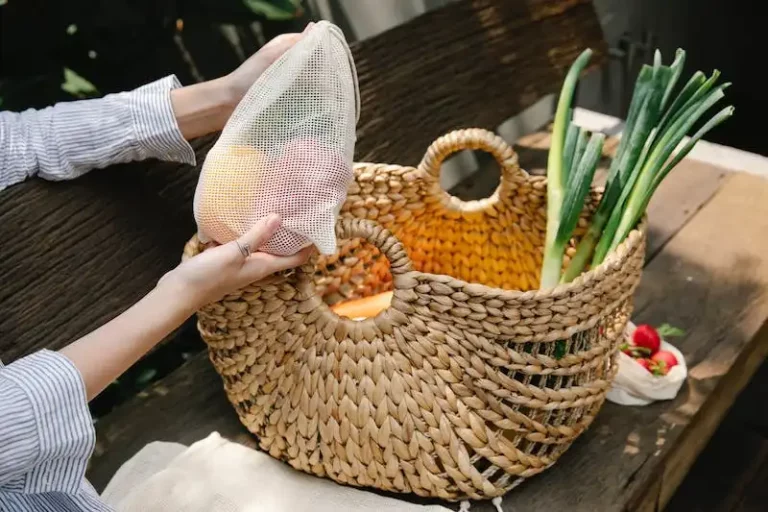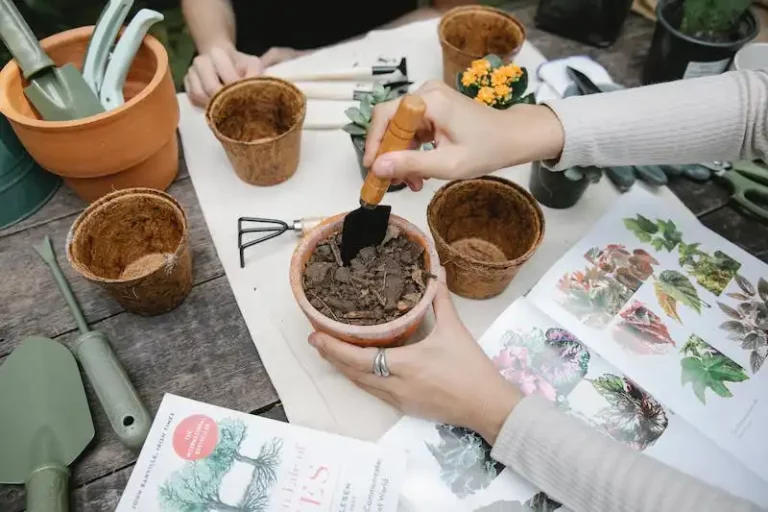Wild garlic, also known as Allium vineale, is a fascinating plant that is native to Southern Europe. It is a member of the onion family, Alliaceae, which includes other popular plants such as onions and shallots. Wild garlic is renowned for its unique and pungent smell, which is reminiscent of both onion and garlic. However, what sets wild garlic apart from its relatives is its beautiful flowers, which bloom in the springtime.
When it comes to reproduction, wild garlic plants have a rather interesting strategy. Instead of relying on traditional means of pollination, such as bees and butterflies, they have developed a clever way to spread their seeds. Wild garlic flowers are not self-fertile, which means they need the help of other plants for reproduction. The flowers produce nectar to attract insects, and as the insects visit the flowers, they unintentionally transfer pollen from one flower to another. This helps to ensure that the wild garlic plants are able to reproduce and spread their seeds to new areas.
If you are thinking of growing wild garlic in your garden, you will be pleased to know that it is relatively easy to cultivate. Wild garlic bulbs are readily available and can be planted in the autumn or early spring. They tend to prefer shady and moist areas, but they will also grow in sunny spots as long as the soil is well-drained. Wild garlic is a perennial plant, which means it will come back year after year. In fact, some wild garlic plants can live for up to 10 years or more.
Wild garlic has a multitude of culinary uses and can be used in a variety of dishes. The leaves can be added to soups, salads, and pesto, while the flowers make a beautiful garnish for salads or desserts. The bulbs can be used in the same way as onions and garlic, adding a unique flavor to your cooking. Some people even use the bulbs to make a homemade garlic gin! However, it is important to note that wild garlic can be quite invasive, so it is best to harvest it responsibly and avoid cultivating it in areas where it may spread uncontrollably.
In conclusion, wild garlic, or Allium vineale, is a fascinating plant that is both beautiful and versatile. Whether you are a gardening enthusiast looking to cultivate a new addition to your garden or a food lover seeking to experiment with new flavors, wild garlic is a plant worth exploring. Its unique smell, beautiful flowers, and culinary potential make it a superbly interesting plant to grow. However, it is important to be mindful of its invasive tendencies and to harvest and cultivate it responsibly. So, why not give it a try and see what wild garlic can bring to your garden and kitchen?
Wild Garlic: How to Forage it and How to Grow Your Own
If you are a fan of adding flavor to your dishes with fresh herbs and garnishes, look no further than wild garlic. This versatile plant is widely available and can be foraged in the wild or grown in your own garden.
Wild garlic, also known as Allium vineale, has a distinct, garlicky flavor that adds a delicious kick to any dish. It is commonly found in woodland areas and forests, often referred to as ‘the weekend flowered’ due to its tendency to bloom around the same time as bluebells and other wildflowers.
The plant itself looks very much like a wild garlic bulb, with long, thin leaves that grow up to 12 inches in length. The edible bulbs can be harvested in the summer, making it easier to incorporate this tasty ingredient into your cooking.
So, where does one find this ‘willy garlic’? Well, it can be grown in a variety of locations, but it does prefer well-drained soil. If you’re considering planting your own wild garlic, you should thank Devon-based garden designer Plantura for this helpful video guide on how to grow it:
- Choose a sunny spot in your garden with well-drained soil
- Plant the wild garlic bulbs about 2 inches deep and 4-6 inches apart
- Water them regularly, especially during dry spells
- Thin out the leaves as they grow to give the bulbs more space to develop
- Harvest the bulbs from the second year onwards
But for those who prefer to forage rather than grow their own, wild garlic can be found in abundance in certain areas. If you’re not sure where to look, foraging expert, James Wong, has an alert for you– wild garlic is often found in the same locations as other common wild food items, such as hazelnuts, plums, and pears.
When foraging for wild garlic, make sure you know what you’re picking. The leaves are the most commonly used part of the plant, but the flowers and bulbs are also edible. However, be aware that the flowers tend to have a stronger flavor.
So, whether you decide to forage for wild garlic in the forest or grow your own in the garden, you can enjoy the delicious taste and health benefits it offers. From soups and salads to garnishes for your favorite dishes, wild garlic is a versatile ingredient that will add a burst of flavor to any meal.
Recommended videos for you
If you’re interested in learning more about wild garlic and how to grow it, check out these informative videos:
1. “Growing Wild Garlic: A step-by-step guide” – This video provides a detailed explanation of how to grow wild garlic in your own garden. It covers topics such as planting conditions, seedling care, and harvesting the edible leaves and flowers.
2. “The Benefits of Wild Garlic” – Learn about the various health benefits of consuming wild garlic, including its high antioxidant content and antibacterial properties. This video also offers creative ideas for using wild garlic as a garnish or ingredient in recipes.
3. “Wild Garlic vs. Regular Garlic: What’s the Difference?” – Find out how wild garlic differs from the garlic commonly found in grocery stores. Discover why wild garlic is valued for its unique flavor and how it can be used in cooking.
4. “Wild Garlic: A Forest Treasure” – Join a nature enthusiast on a walk through a wild garlic-filled forest and learn about the plant’s life cycle, reproduction, and its role in the ecosystem. This video highlights the beauty of wild garlic in its natural habitat.
5. “Wild Garlic Recipes: From Pesto to Chocolate” – If you’re curious about the versatility of wild garlic in the kitchen, this video is for you. Explore a variety of delicious recipes using wild garlic, from traditional pesto to surprising combinations like wild garlic and chocolate.
Whether you’re a seasoned gardener or just starting out, these videos provide valuable insights and inspiration for incorporating wild garlic into your own garden and kitchen.
How to grow garlic: Delicious, lucky, and superbly easy to cultivate
Growing garlic is a popular choice for many gardeners due to its delicious taste and ease of cultivation. Whether you have a large garden or just a few pots on your balcony, you can enjoy the satisfaction of growing your own garlic plants. In this article, we will guide you through the process of growing garlic successfully.
The right time to plant garlic
Garlic is usually planted in the fall, so that it has enough time to establish roots before winter. However, it can also be planted in early spring if you missed the fall window. You’ll need to consider the time it takes for garlic to grow – about 9 months from planting to harvest.
Choosing the right garlic variety
There are many different varieties of garlic to choose from, each with its own unique flavor profile. Some popular varieties include ‘Devon Martin’ and ‘Allium’. When selecting a variety, consider the size of the garlic bulb as well as the taste you prefer.
Preparing the soil
Garlic prefers well-draining, fertile soil. Before planting, remove any weeds and loosen the soil to a depth of about 8 inches. If your soil is dense, you can add some compost or organic matter to improve its texture and fertility.
Planting the garlic cloves
Break apart the garlic bulbs into individual cloves, being careful not to damage them. Plant the cloves about 2 inches deep and 4 inches apart, with the pointed end facing up. If you’re planting in rows, keep a distance of about 12 inches between each row to allow the garlic plants to spread.
Caring for garlic plants
Garlic plants are relatively low-maintenance. Water them regularly, especially during dry spells, but be careful not to overwater. Mulching around the plants can help to retain moisture and suppress weeds. Garlic is generally not bothered by pests, but if you notice any signs of insect damage, simply remove the affected leaves or apply an organic insecticide if necessary.
Harvesting garlic
Garlic is ready to be harvested when the foliage turns yellow and begins to dry out. Gently dig up the bulbs with a garden fork, being careful not to bruise or damage them. Brush off any excess soil and hang the plants in a cool, dry, and well-ventilated space to cure for about 2-3 weeks. Once cured, trim the roots and store the garlic bulbs in a cool, dry place for later use.
Growing your own garlic is a rewarding experience that allows you to enjoy the fantastic flavor of this versatile ingredient. So why not give it a try? Start growing your own garlic plants and reap the delicious and lucky fruits of your labor!
Comfrey: What you need to know about the plant that ‘looks like borage a couple of gins into a long weekend’
Comfrey, known scientifically as Allium vineale, is a wild garlic that can be found in dense areas where it has ‘invaded every nook and cranny’. As a gardener, you need to be alert when it comes to this plant as it can easily take over your garden if you’re not careful.
Comfrey is very similar to borage, with its leaves resembling that of the borage plant. But what sets it apart is its wild garlic smell, which can be quite pungent. The leaves grow up to a few inches in height and the plant produces small flowers when it blooms.
If you’ve never seen comfrey in its natural habitat, you may mistake it for another plant. But take a closer look and you’ll notice the distinct garlic-like odor. Comfrey has been grown for centuries, particularly in Devon, where it’s a top choice for salad lovers.
The plant has been considered invasive in some areas, particularly raspberry fields where it can take over and choke out other plants. Its fast growth and prolific seedling production make it a gardener’s nightmare.
But comfrey is not all bad. It has its benefits as well. It is a great companion plant for cucumbers and other fruits, as it helps improve pollination. Comfrey leaves can also be used as mulch or added to compost piles, providing valuable nutrients to the soil.
If you decide to grow comfrey in your garden, be prepared to mark its location, as it tends to spread easily. However, with the right management, comfrey can be a useful addition to your garden.
In conclusion, comfrey is a plant that may not be well-known, but it’s worth getting to know. Its garlic scent and dense growth make it stand out in the garden. Whether you love it or hate it, comfrey is definitely a plant that will leave an impression.
So, the next time you come across comfrey in the wild, ask yourself, ‘Does it really look like borage a couple of gins into a long weekend?’
Plantura, thank you for the following information.
– Martin, an incurably enthusiastic gardener

